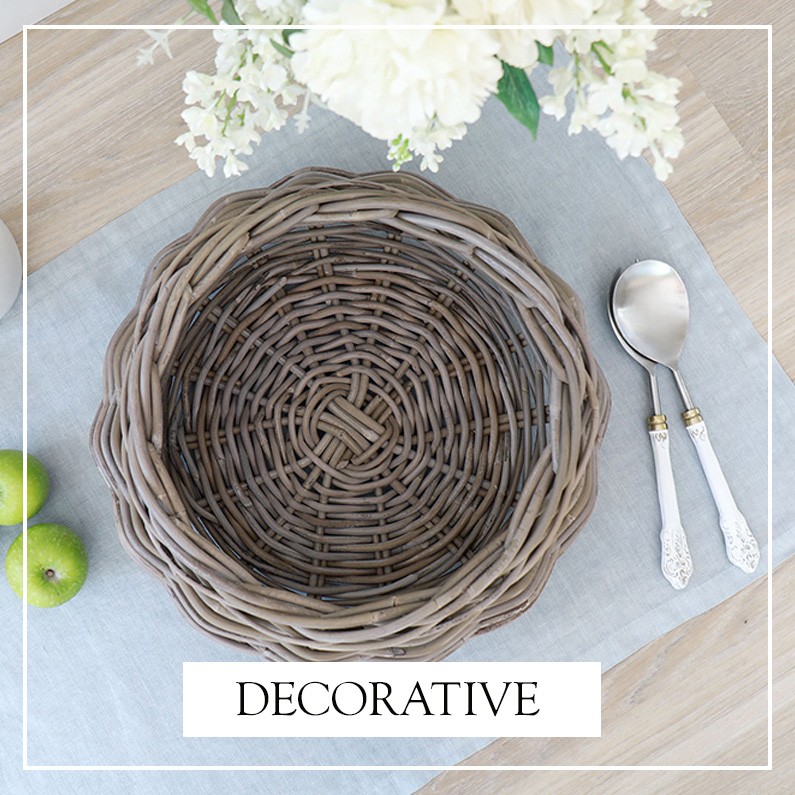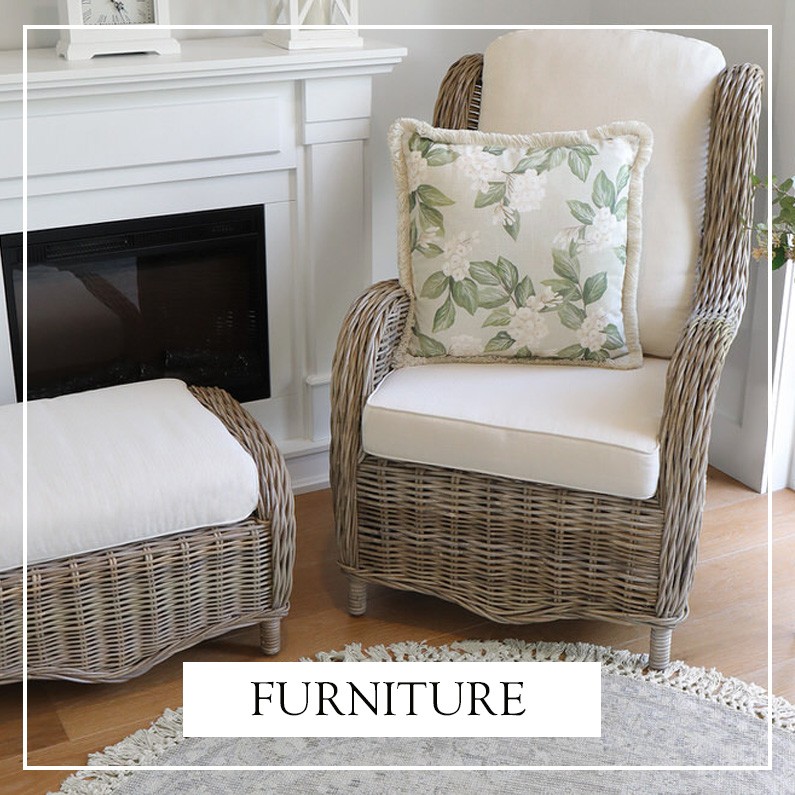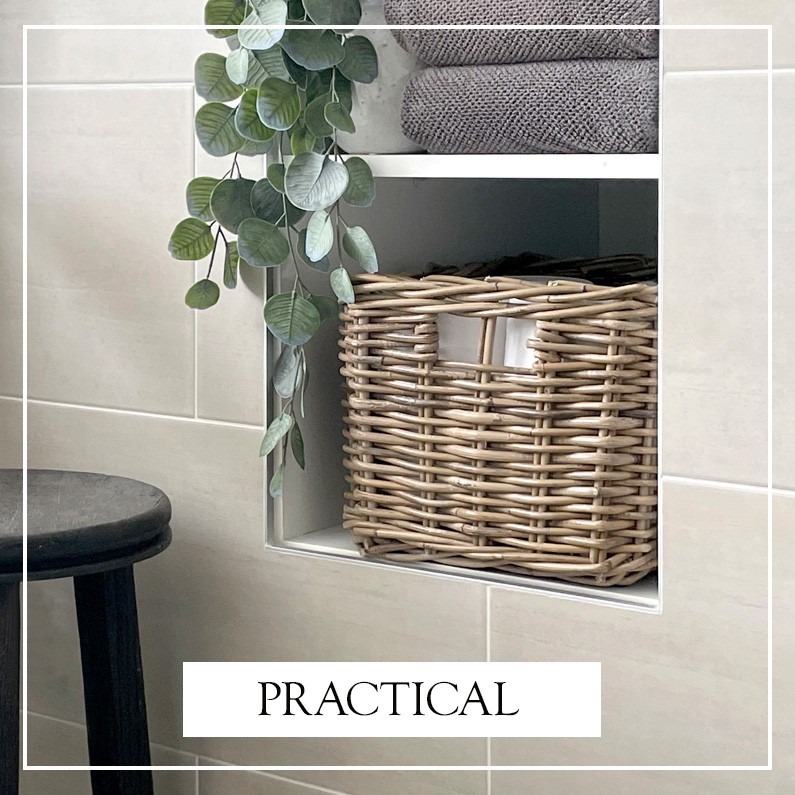The History of Rattan - the story of a household classic
What is the History of Rattan?
A versatile and beautiful material, the history of rattan is a fascinating one. Known for its durability, and you've probably had at least one basket or piece of furniture made from rattan in your own home. It has been used for centuries in the production of furniture and home decor items and its popularity can be attributed to its strength, flexibility and lightweight nature. If you imagine a traditional European country home, you almost certainly see a classic rattan armchair in the conservatory, a rattan log basket by the fire and a rattan gathering basket in the kitchen ready to take outside to collect fresh produce or flowers from the garden. But, how did rattan become such a staple in the world of homewares?
What is Rattan?
Rattan is a climbing plant that grows up the tall trees of rainforests in tropical climates. It might seem surprising, but rattan is actually a type of climbing palm. Yes, a palm! It belongs to the Arecaceae family and is native to South East Asia, Africa and Australia. It grows by climbing up very tall trees which explains why the canes are so long and almost the same width all the way up - perfect for use in weaving.
When was Natural Rattan First Used?
Humans have been putting natural rattan to good use for thousands of years - harvesting the canes to use in household items and even to make arrows. And, because both the fruit and the shoots are edible - eating it.
Rattan furniture began to flourish during the colonial period, when European countries started expanding their trading routes throughout South East Asia. Notably, it was the Dutch who played a major role in the development of the rattan industry during this time. They established colonies in Indonesia and begain exporting rattan furniture to Europe during the 1600s. It quickly gained popularity spreading across the British Empire, where it captivated Victorians, seen as a luxurious item that would add a touch of the exotic Orient to their home decor.


How is Rattan Used in Home Decor?
Because rattan is lightweight, even a large armchair made from rattan is easy to lift and move around the house or verandah - unlike a wooden chair. So it is easy to transport and use in a variety of settings. Baskets made from rattan are perfect for holding heavy materials like firewood as the rattan is strong and the basket won't lose its shape or break under the weight. Additionally, rattan was used to make all kinds of storage baskets from shopping baskets to storage trunks, as well as many other decorative items.
The demand for rattan furniture increased even more during the 19th century particularly in the Western world in countries such as England and the United States. This was due to the growing popularity of Victorian and Edwardian furniture styling which utilised rattan's unique look as a decorative element.
However, following the introduction of new materials such as metal and plastic in the early 20th Century, which were cheaper and easier to produce, the rattan industry saw a decline in popularity.
Why is Rattan Furniture a Sustainable Choice?
Rattan furniture is a sustainable option because it is renewable, grows to maturity so quickly and is harvested while preserving the forests it grows in. It is also biodegradable when it reaches the end of its useful life.
In the 60s and 70s, rattan furniture experienced a resurgence in popularity as part of the bohemian and hippie movements. Rattan furniture was seen as a sustainable option which also brought a natural feel to the home, creating a laid-back, relaxed atmosphere. This 'rattan resurgence' continued through the 80s and into 90s due to the increasing demand for sustainable choices from consumers.
Today, rattan furniture and home decor items are experiencing another increase in popularity as the consumer demand for sustainable options is reaching an all time high. Rattan is a renewable material which grows quickly and is harvested without cutting down the forests it grows in. In fact, the trees need to stay there so that the next crop of rattan can grow. The rattan canes are ready to harvest after only two or three years of growing so it's very well suited to mass production. It's also biodegradable, making it the perfect eco-friendly choice for your next furniture or basket piece.


Handmade Rattan Adds Traditional Beauty
In addition to sustainability, rattan furniture and home decor items are also a versatile, stylish addition to your home. Rattan can be used in a variety of home decor styles, from a traditional farmhouse style to being used as an accent piece in a modern setting. It's also available in a range of naturally dyed colors and finishes, giving you the versatility to choose which colour best suits the style of your home.
One of the unique features of rattan furniture is that it's handmade, using traditional techniques that have been passed down through generations of family craftsmen. The process of weaving rattan is a labor-intensive one, requiring a high level of skill as well as attention to detail, resulting in furniture which is not only beautiful but also durable and long-lasting.
Rattan - Loved Throughout History
Rattan's history is both long and fascinating. From its early uses in ancient times, to its popularity in Victorian England, rattan has remained one of the most popular materials in the world of furniture and home decor throughout time. Today, rattan continues to be a fantastic choice for anyone looking for a beautiful furniture option that adds a warm touch to your home whilst still making sustainable choices.
It's no wonder that rattan is still in use and so popular today. Thanks to its durability, versatility, and sustainability, all of which are important factors when considering furniture, rattan's unique qualities make it an attractive choice for consumers.
Browse the wide range of rattan furniture and rattan baskets here at French Knot.





